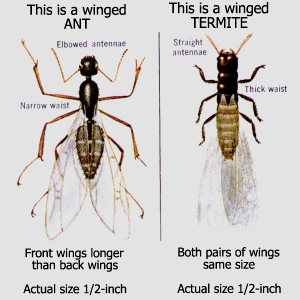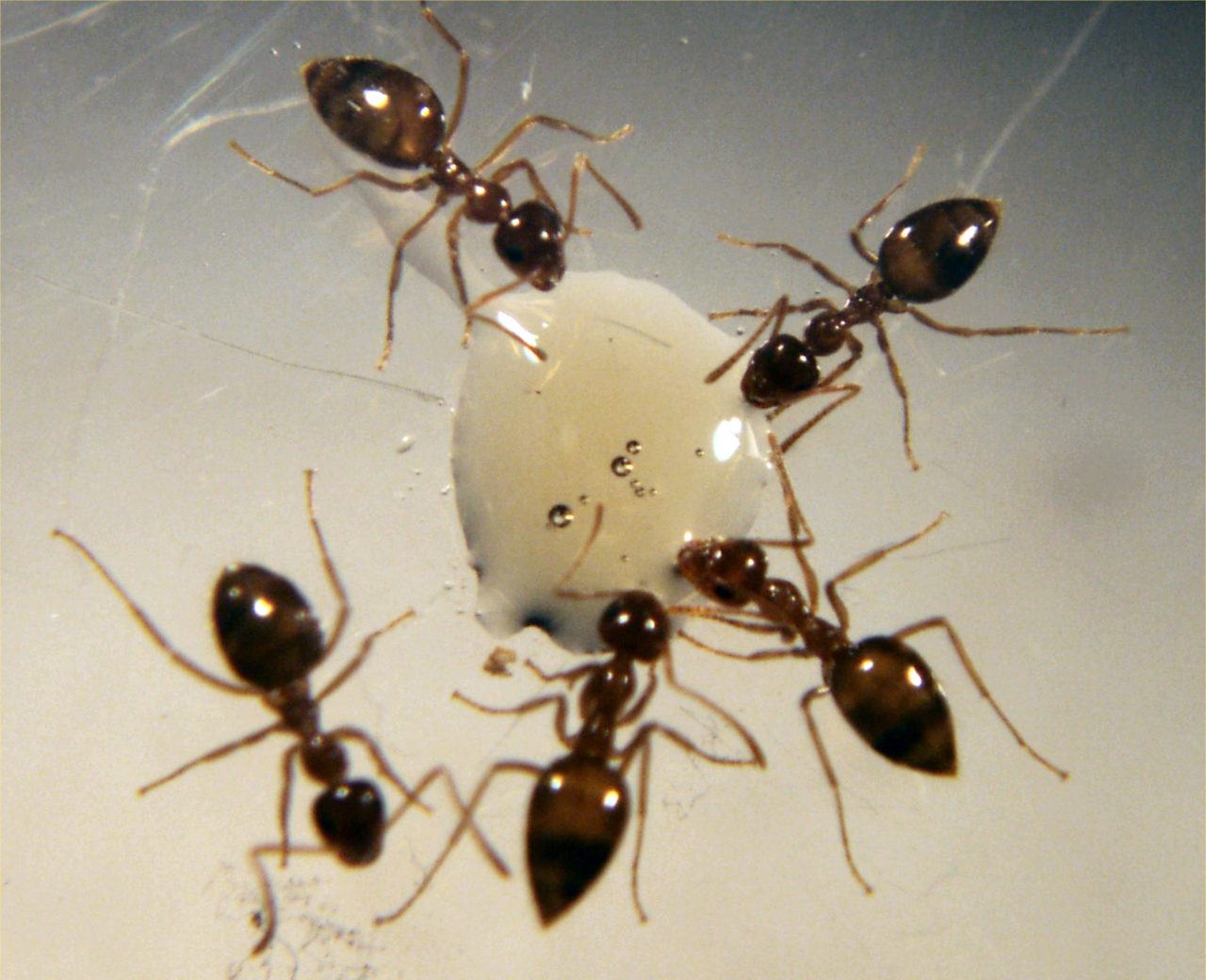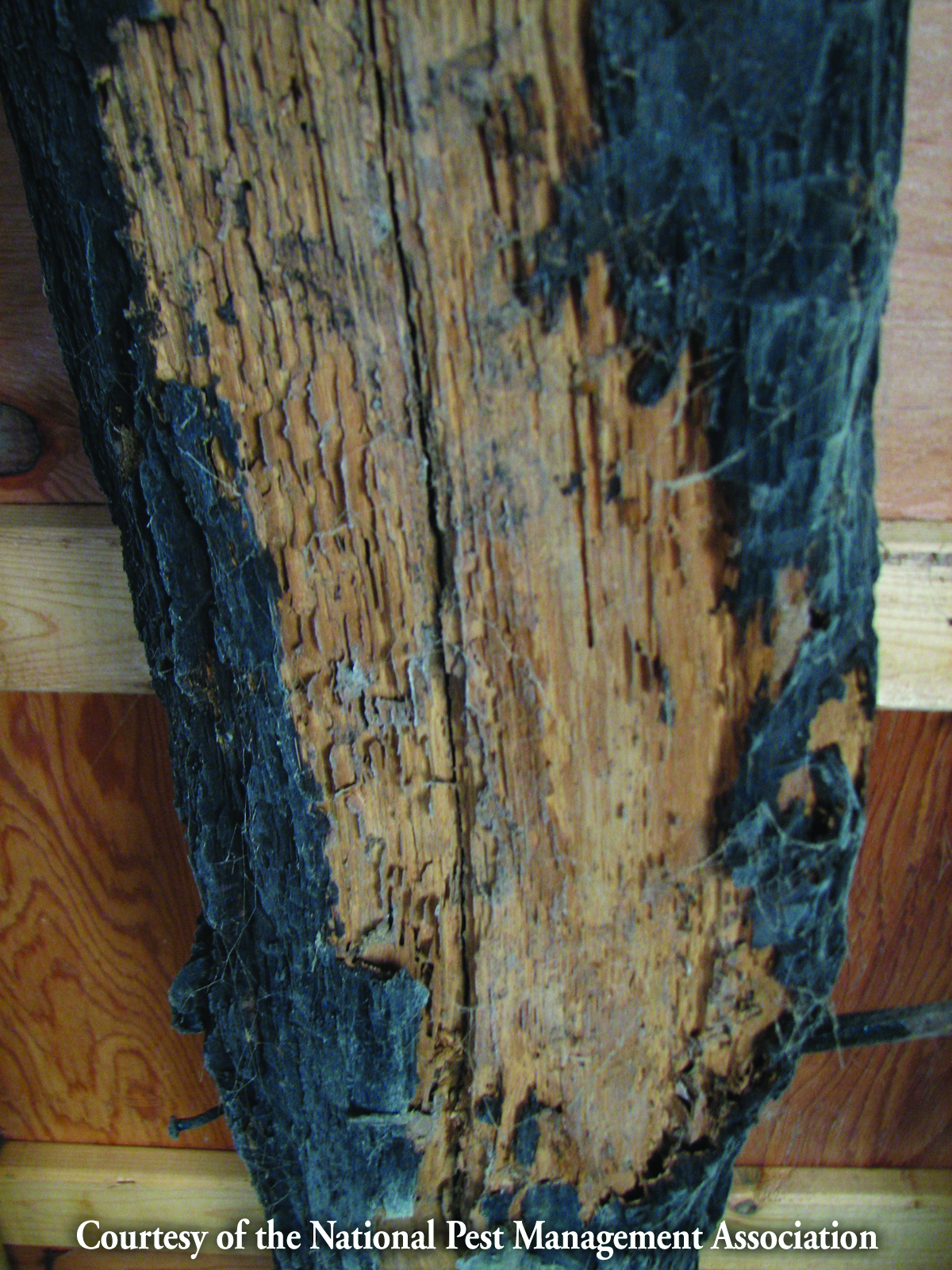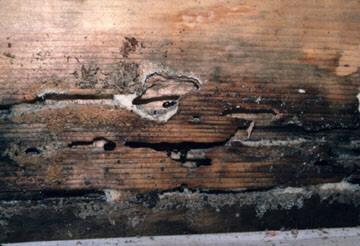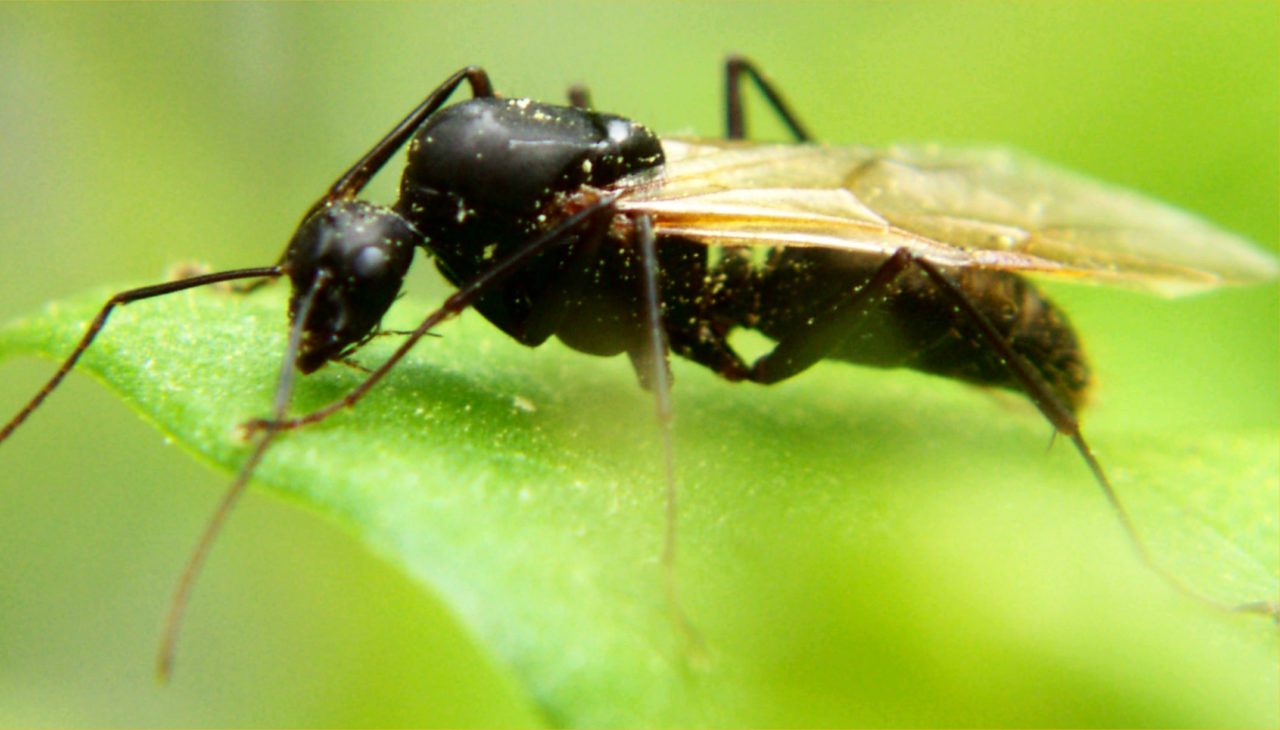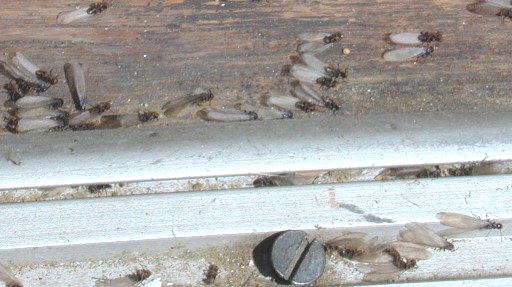Spring is in full swing. Bugs are waking up and looking for food and comfy spots to establish new colonies. If they make their way to your property, would you be able to tell the difference between ants and termites in Indiana?
Termites vs Ants
There are wood-destroying ants. And then there are termites. Both can do some serious property damage. Both (more often than not) won’t be covered under any homeowner’s insurance plan if you need to hire a professional for a treatment. Both are not a DIY pest. Despite all these similarities, there are many differences between ants and termites in Indiana.
- Anatomy.
- Diet. Most common household ants will be foraging for crumbs dropped on the floor, looking for your dog’s uneaten kibble, swarming near a leaky hose spigot outside, or following a trail to a sticky juice spill on the counter. Carpenter ants are no exception. They go for proteins like meat, egg, and cheese while they’re mating, but they’re after food items like the other ants. Termites eat one thing: wood.
Odorous House ants feeding on sweet syrup - Damage.
This is termite damage. Note the tunnel form.
This is Carpenter Ant damage to a wooden beam. Note the bore shapes and chewed (not eaten) wood particles.
Ant Facts
- All ants are social insects that live in colonies
- There are more than 700 ant species in the United States
- They have 3 body segments
- Ants are the most common insect pest in America
- Ants are found on floors, counter tops, and in food items indoors in the spring and summer while searching for new food sources
- Some ants build nests in sidewalk cracks, while others prefer to build colonies in water-logged wood
- Most ants are just nuisance pests, but some can cause major damage (Carpenter ants), and they do contaminate food once they infest an item
- There’s not just one product to kill all ants; the best way to get rid of ants depends on what species of ant is invading your home since they all responds to different foods during different times of the year.
Swarming Carpenter Ant Alate (reproductive stage)
Termite Facts
- Termites are wood-destroying insects whose presence dates back to the dinosaurs.
- Termites are known as “silent destroyers” because of their ability to chew through wood, flooring and even wallpaper undetected.
- There are about 2,000 known species of termites in the world.
- The most common termite species found in the United States are subterranean termites, Formosan termites, dampwood termites, drywood termites.
- Subterranean termites are by far the most destructive species of termite as they eat 24 hours a day, seven days a week.
- Each year, termites cause more than $5 billion in property damage.
- Termite colonies can have upwards of 2 million members.
- Termites are present in 70 percent of countries across the world and their population outnumbers human beings on a ratio of ten to one.
- The queen termite can lay up to 40,000 eggs per day.
Subterranean termite swarmers
Termite Prevention Tips
There are many steps a homeowner can take to help prevent termites from infesting their property. Most importantly, a homeowner should eliminate or reduce moisture in and around their home, which termites need to thrive. Here are some other tips:
- Divert water away from your home’s foundation by installing properly functioning downspouts, gutters and splash blocks.
- Reduce humidity in crawl spaces with proper ventilation.
- Trim vines, hedges and other vegetation to prevent them from blocking vents.
- Remove old form boards, grade stakes, tree trunks and roots near a building, as they may attract termites.
- Maintain an 18-inch gap between soil and any wood portions of your home.
- Store firewood at least 20 feet away from the house and and 5 inches off the ground. Check it for pests before bringing it indoors.
- Routinely inspect the foundation of your home for signs of termite damage.
Some things are better left in the hands of a professional. If you see signs of termite damage or signs of ant infestation, please reach out to us! That’s what we’re here for!
{{cta(‘920135bf-81c2-4a46-afab-6177a08c921c’)}} {{cta(’14ab2ea1-3462-41d5-b5c5-ae63e3de24e8′)}}

